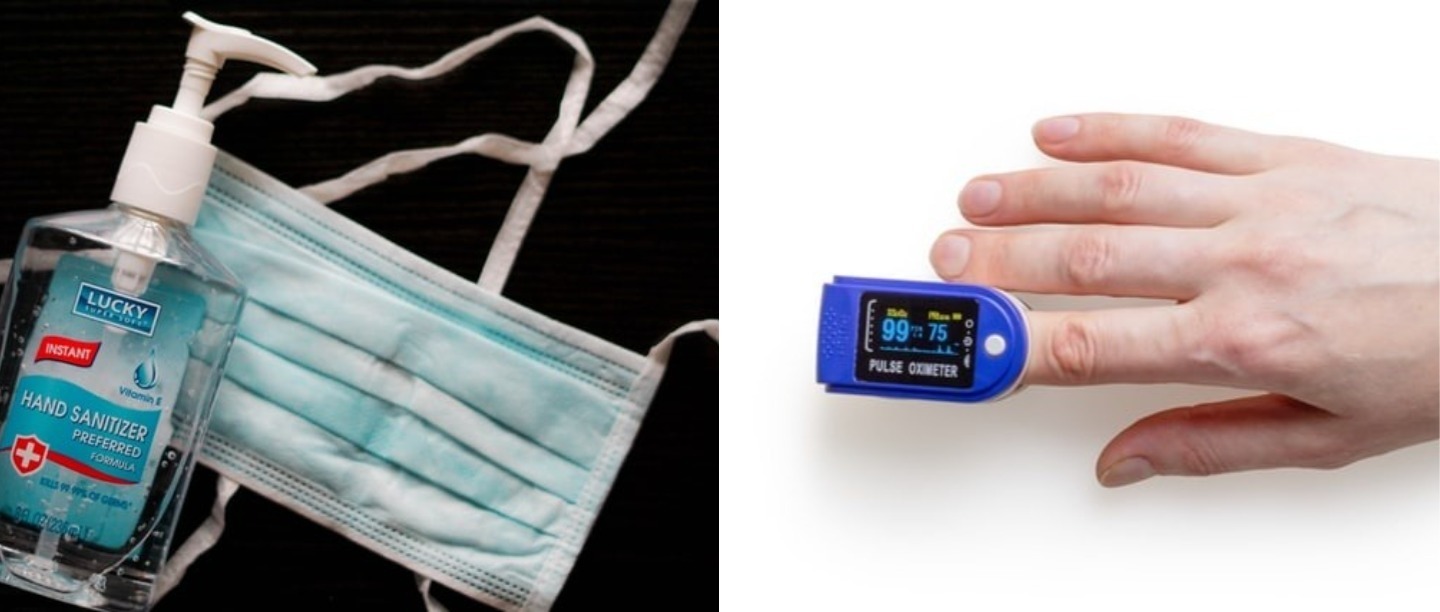
The sight of overcrowded hospitals and people begging for oxygen currently going viral on social media are as alarming as they are heartbreaking. I say this from my own experience. I have my parents and grandparents at home and I am constantly worried about the kind of hell that would break loose if any one of us ends up testing positive. However, I also know that panicking is not going to help any of us and the need of the hour is to stay informed. And to help you with all the information that you might need, we reached out to Dr. Harish Chafle, Consultant, Pulmonology and Critical Care, Global Hospitals Mumbai. We asked him some important questions on COVID-19 and home isolation.
According to Dr. Chafle, “About 95% of the COVID-19 cases can be treated at home.” While the key lies in earlier identification, proper monitoring and care are equally important. Rest assured, each one of us should be prepared for a COVID-19 crisis at home, and here’s everything that we should know:
COVID-19 Emergency First Aid Kit

Unsplash
It is important that all of us have a COVID-19 emergency first aid kit handy at all times right now. Here is all that your COVID-19 kit should comprise of:
- Pulse Oximeter
- Digital Thermometer
- Triple-layered surgical Mask
- Hand sanitizer and handwash bottle
- Tablets: Paracetamol 650mg, Tab Vitamin C, Tab B complex, Electrolyte replacement drinks
- Hand gloves
- Paper towels
How To Identify If A Case Is Mild, Moderate Or Critical
Unsplash
As Dr. Chafel shares, “Classification of cases as mild, moderate or severe depends on oxygen saturation recorded. It is mild if oxygen saturation is above 95 during rest. The case is moderate if oxygen saturation at rest is below 95 and the patient feels breathing difficulty at slightest exertion at home. It is severe if the patient has breathing difficulty at rest with oxygen saturation dropping below 90 and fever.”
To make it easier for you, here are the symptoms that lead to critical cases and you should look out for:
- Oxygen saturation in a pulse oximeter is constantly less than 92
- If the patient has breathing difficulty (both during exertion and at rest)
- The patient has a persistent fever (more than 100 and needs Paracetamol round the clock)
- If the patient is experiencing giddiness or excessive loose motions.
If the patient is not experiencing any of the above symptoms, you can treat it as a mild COVID-19 case at home.
Things To Do After Testing Positive
Unsplash
Once you have identified that the case is treatable at home, here are few home care tips that you should start following:
Isolate
If someone tests positive at home, isolate them in a single room. Do not panic. 95% of COVID-19 patients can be treated without needing hospitalisation. Consult a doctor via phone and start basic treatment at home.
Monitor
Start monitoring the temperature and oxygen saturation by a pulse oximeter. Check the levels both when the patient is at rest and after they brisk walk for five to six minutes. If any of the readings are below 95, seek advice from a healthcare expert. Check your temperature and oxygen saturation at least two times a day.
Trace
Identify people at home or friends who were in close contact with the patient. If they are above 60 years of age or have comorbidities like diabetes, blood pressure, heart disease or any disease of lung, they should get tested immediately. If not then one can monitor for any symptoms suggestive of COVID-19 like fever, sore throat, breathing difficulty, body ache, loss of taste or smell. Get them tested if they have any of these symptoms.
Nutrition
Start Tab Vitamin C, B Complex, drink plenty of water and eat at regular intervals with protein-rich food. Take nutritious meals that include green leafy vegetables, fruits, whole grains, and nuts.
Proning
Sleep in a prone position (lying on your stomach) at home for at least 12 hours a day.
Rest
Have an adequate amount of sleep at night. Rest during the daytime for two to three hrs as well.
Move
Perform mild exercises at home like walking inside the home, pranayam, and yoga. Brisk walking for a duration minimum of six minutes inside the house is very important.
Take steam
Take steam at least thrice a day.
Post COVID-19 Care
Now that the major part of the illness is over, focus on post-COVID recovery. “The most important part of recovery is to have a healthy, high protein diet mixed with fruits and vegetables. Make sure to include all essential protein, carbohydrates, minerals, and plenty of liquids,” says Dr. Chafle.
He further adds, “Additionally, keep performing basic exercises like deep breathing, pranayama, yoga, and walking inside the house. Continue treatment and follow up with necessary blood tests if advised by your doctor.”
Lastly, it is important that you give yourself a good time to recover. Don’t over-exert yourself by trying to get back to your former routine. Take it one step at a time and soon enough you would get better. Also, don’t forget to use your mask even after you recover from the infection and consult your doctor about the right time to take your COVID-19 vaccine.
Featured Image: Unsplash